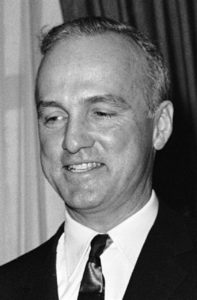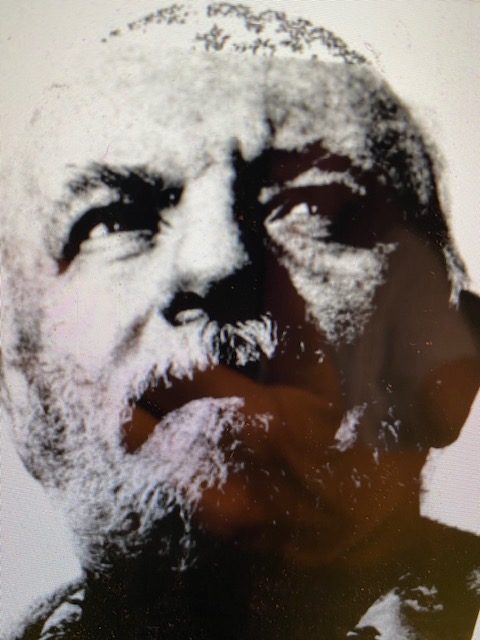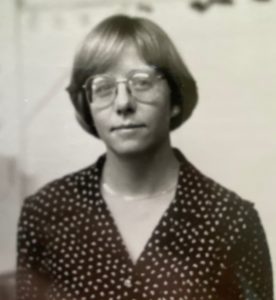Ed Murphy: Gay Blackmailer and Activist – Chapter 3: The Chickens and the Bulls
The blackmail scheme of “The Chickens and the Bulls” as the New York City Police Department called it, or “Operation Homex” to the FBI, is now unknown or forgotten by most lesbian and gay people and activists. The name refers to an extortion ring of cops and criminals that preyed on prominent, closeted gay men in the 1960s. Corrupt police officials and police impersonators known as “Bulls” used young male prostitutes called “Chickens” to blackmail wealthy, important, or closeted pillars of the establishment across the country. The ring victimized thousands of men, including politicians and government officials, military officers, film, TV and entertainment celebrities and producers, prep school and university professors, headmasters, and trustees, surgeons, scientists, business executives, and Catholic priests. Most of the “chickens” were teenage runaways from homophobic or abusive family backgrounds. They survived by turning tricks in the back of trucks parked on waterfront piers, seedy hotels, or getting pimped out to strangers.
This is how the scam worked: a man would travel to a large city, like New York or Chicago, where he would procure the services of a male prostitute. The prostitute would be solicited at a gay bar, in the bar of a hotel, or in the hotel’s men’s room. Sometimes the Concierge of the hotel was involved. Once the blackmail victim and his prostitute were alone in a hotel room, one of two things would happen; the prostitute would steal the man’s wallet and run out of the hotel, or the “Hotel Detective” would burst into the room and demand cash for not arresting the visiting victim. The stolen wallet would be turned over to the ringleaders, who with their corrupt law enforcement associates, would compile information on the victim. If the “John” was rich, famous or from a prominent family, two members of “law enforcement” would travel to the man’s home or place of business and threaten him with public exposure – even arrest – unless they were given cash to make the case disappear. The men paid rather than have their homosexuality disclosed. One such encounter, heavily redacted, was described in an FBI memo:
“(BLANK) is a guitar player with (BLANK) and while in New York City in 1965 picked up and committed oral copulation on (BLANK) at the Hilton Hotel, 34th Street. Upon (BLANK) return to California, he was approached by an individual named (BLANK)…who posing as a New York City police officers, extorted an unknown sum of money from him. The extortion again was a result of threatened public exposure and/or incarceration for a New York City homosexual act.”
As the NYPD and the FBI pursued their investigations in 1965 and 1966, they found that the blackmail ring operated in large cities around the country and had a fluid cast of about two dozen chickens and bulls. One of them was Edward Murphy, who was the house detective for the Hilton Hotel on 34th Street in New York. “DETECTIVE AT HOTEL IS HELD IN EXTORTION” the August 5, 1965, New York Times headline blared.
“A 39-year-old house detective at the New York Hilton was arrested early yesterday as the leader of a gang that had extorted a total of $100,000 from “rich playboys and executives…The house detective, Edward Murphy, was held in $7,500 bail for a hearing August 13. He was charged with extortion and impersonating an officer.”
Among the men that Ed Murphy identified as victims of the blackmailers were Congressman Peter Frelinghuysen (R-NJ) and Admiral William Church, cousin of the powerful senator Frank Church (D-ID), and head of the New York Naval Yards in Brooklyn. An FBI memo described the night Rep. Frelinghuysen picked up a chicken:
“(BLANK) stated the Congressman was very scared and he told (BLANK) that he was a doctor and that his wife and kids were out of town. The Congressman invited (BLANK) to his house to have a drink. (BLANK) went with the Congressman and after arriving at the house, the Congressman told (BLANK) to take off his clothes and make himself comfortable. (BLANK) undressed and the Congressman undressed. Both had a couple of drinks and the Congressman then committed two perverted sexual acts upon (BLANK).”
Ultimately, Rep. Peter Frelinghuysen paid $50,000 in blackmail money. When Admiral Church was approached by NYPD James McDonnell to testify before a grand jury, he was initially “arrogant and abrupt.” Church told McDonnell that he wouldn’t accompany him back to New York, but he would drive up the next day. Instead, he drove to a motel in Maryland and committed suicide. Admiral Church’s shakedowns had started several months after being robbed of his wallet by a chicken at the Astor Hotel in New York. He had handed over $5,000 to the blackmailers before he put a bullet in his head. Most of the victims were wealthy enough to pay off the blackmailers. In a New York Times article published on March 3, 1966 – “Nationwide Ring Preying on Prominent Deviates,” a celebrity believed to be Liberace is described.
“A TV celebrity, a twinkling star who has millions of female fans all over the world, refused to take the witness stand. However, he did tell investigators that he had paid blackmailers more than $20,000. “I can afford to lose the money,” he said, adding: “I hope they die of cancer.”
The case of the “Chickens and Bulls” began with an arrest of a man impersonating a detective at Grand Central Station in New York. 34-year-old John Aitken was the bogus detective. The arresting officer was NYPD detective James McDonnell. During his interrogation back at the 17th precinct, Aitken said that, in exchange for a light criminal charge, he would reveal details about an extortion ring that had shaken down dozens of prominent closeted homosexuals, most of them married with families. He talked for hours, and McDonnell was amazed at the names he revealed and the money the ring had collected. Aitken’s tips led to the arrest of Ed Murphy by Detective McDonnell at the Hilton Hotel. According to McDonnell, Murphy had been arrested with a counterfeit detective’s shield in his possession. Some of the cops at the station house were ready to take Ed into a back room and give him a beating for passing himself off as one of them. But McDonnell intervened to protect Murphy and recruited him as an informer. “I told Murphy I’d be straight with him and he trusted me.”
The leader of the blackmail ring was 51-year-old Chicago Police detective John J. Pyne. Pyne joined the Chicago Police Department on September 24, 1938, and served until June 24, 1966, when he was arrested by the FBI. The agents found a drawer filled with police badges and identification from almost every state in the country, together with arrest forms and extradition warrants in Pyne’s Chicago home. They also seized an Olympia typewriter from Pyne’s residence whose keys matched various typewritten documents and warrants. He was charged with conspiring to use interstate transportation and the mails to extort money from gay men. According to FBI memos, Pyne was the “big man” who received 10% of all extortion money.
“PYNE is described as a white male American in his 50s, 5’11” and of medium weight, grey hair, of Irish descent, distinguished looking, who drives a 1966 bronze Bonneville and who lived close to O’Hare Field Airport in Chicago, Illinois,” the FBI memo stated. “PYNE is further described as the nephew of former Mayor Kelly of Chicago and as (BLANK) utilized by the gang. PYNE is reverently referred to by gang members as “JAY P.”
Pyne was responsible for seeing that all gang members get out on bond if arrested, securing the services of an attorney for them, furnishing them with authentic and fraudulent police identification credentials and/or warrants. He used his contacts within police departments around the country to get badges and documents that his gang could use in extortion attempts. Pyne was ruthless. According to the FBI memo, when Pyne learned that one or two of his extortionists had had sex with their victims, he contemplated killing those accomplices to keep them quiet.
Sherman Chadwick Kaminsky, 38, Elwood Lee Hammock, 48, and George Michael Gentile, were Pyne’s chief extortionists. Once they were caught, they revealed the full scope of the operation and helped the FBI nail Pyne. Kaminsky went under the alias of Paul Vargo and had “salesman” listed as his occupation. Kaminsky said he was “born and raised on the streets of New York.”
His working partner was 27-year-old John Fellenbaum, a six-foot bodybuilder whose beefcake physique was an attractive lure. In most instances, Fellenbaum beat the victim and stole his wallet or billfold. During his trial, Fellenbaum made a gentlemanly antiques dealer from Maine take the stand and publicly “out” himself, only to plead guilty immediately after the opening trial session. This angered the judge so much he stated: “I have been sentencing people for twenty-seven years and it has been a long time since I have come upon a case that was so revolting as your case. I think you are so steeped in filth that as I read the report I cringed, and my flesh crept as I read the depth of inequity to which you allowed yourself to sink.”
The blackmail ring was first publicly disclosed on February 17, 1966, when 17 suspects were indicted and nine were arrested, including Murphy. Arrested in New York with Ed Murphy was ex-con and ring member William Joseph Burke, 53. Burke also went by the alias of William J. Casey. Burke had a long criminal record, and nine of the arrests were for impersonating a police officer. The FBI memo describing Burke had a curious notation: “BURKE formerly occupied a position of importance in the homosexual ring hierarchy but that lately he himself has turned into a homosexual, has incurred the gang’s disfavor, and is presently relegated to an inferior position therein.” I was surprised to learn that Ed Murphy was closeted during this period of his life, although he had boyfriends and sex with men and youths. He may have stayed closeted to avoid losing status in the gang as Burke did.
Murphy and Burke were also linked with the Admiral Church shakedown and suicide. Church identified police photos of Murphy and Burke as the phony policemen who called on him at his Pentagon office. Church admitted to paying thousands of dollars in blackmail but denied giving the gang members any military secrets.
There is some debate on size of Ed’s role in the extortion ring. I think he was an important cog in New York City with his security job in a hotel and contacts with gay bars and prostitution. Murphy later claimed that he joined the ring to work undercover and help the gay community. This may be revisionist history. Records suggest that after he was arrested, he flipped for the NYPD and the FBI to avoid jail. According to Phillip Crawford, Jr., in his book, “The Mafia and the Gays,” “Murphy was a reprehensible predator in this ugly racket, and his partner-in-crime George Gentile had a conviction record as a so-called “fruit hustler” going back to 1937.”
“Only after Murphy was hit with four indictments by the Manhattan DA (District Attorney Frank S. Hogan) and another one by federal prosecutors (Andrew J. Maloney, Robert Morgenthau) did he flip in 1966 to become a cooperating witness to implicate his co-defendants and save his own ass from hard time.” Phillip Crawford, Jr. says according to an FBI debriefing form, among the men “Murphy threatened were an IRS agent, university professor and a Catholic monsignor. Murphy collected $55,000 just from the priest.”
By the end of the investigation in 1967, 30 men had been convicted and imprisoned on charges of extortion and impersonating a police officer. On September 22, 1967, Ed Murphy pleaded guilty for his involvement in the extortion scheme before U.S. District Judge Sidney Sugarman, and on December 13, 1967, was sentenced by U.S. District Judge Constance Baker Motley to five years imprisonment suspended and placed on five years’ probation. Murphy also pleaded guilty to the New York State indictments against him, but he served no jail time. Because of his cooperation his sentence was suspended. Murphy did give evidence against two other main figures in the ring: John J. Pyne and Sherman Chadwick Kaminsky. The information he provided helped to convict them. Pyne went to jail, and Kaminsky became a fugitive until he was caught in Colorado 11 years later. Although prosecutors often had enough evidence to win convictions at trial, they got most of the ringleaders to plead guilty. Many of the victims did not want to testify, and the prosecutors wanted to shield the victims by not putting them on the stand.
The New York Mattachine Society, a “homophile” rights organization, became involved in the investigation as a go-between law enforcement and the victims. Some of their members were lawyers with connections to high places, and the Mattachine Society’s involvement helped the victims feel more protected and less exposed. In their March 1968 newsletter, the New York Mattachine Society asked why Murphy had not been sentenced for his role in the blackmail. They were incredulous that Murphy, with his previous prison record, and his involvement in a blackmail scheme that terrorized thousands of prominent men, could be let off with just a slap on the wrist. No clear answer was ever given, except to say Murphy made a deal to turn state’s evidence.
“My double agent days started in ’66 with the extortion ring,” Ed Murphy told journalist Arthur Bell in 1978. “It was supposed to be a one-shot deal. We locked up 21 guys. They’re all dead now, except for three of them.” It’s clear Ed Murphy became an informant—whether he volunteered or was coerced—and his name disappeared from newspaper coverage soon after the first round of indictments. Of the nine New York Times articles on the investigation published between February 18, 1966, and July 12, 1967, Murphy was only mentioned in the initial February 18, 1966, story. That Ed Murphy was able to slip away unpunished may be due to the value of the information he provided the FBI. It also may be due to the oft-rumored homosexual blackmail photos he was said to possess of legendary FBI director J. Edgar Hoover.
Coming Tomorrow: Chapter 4: Secret Lives: J. Edgar Hoover and Roy Cohn





